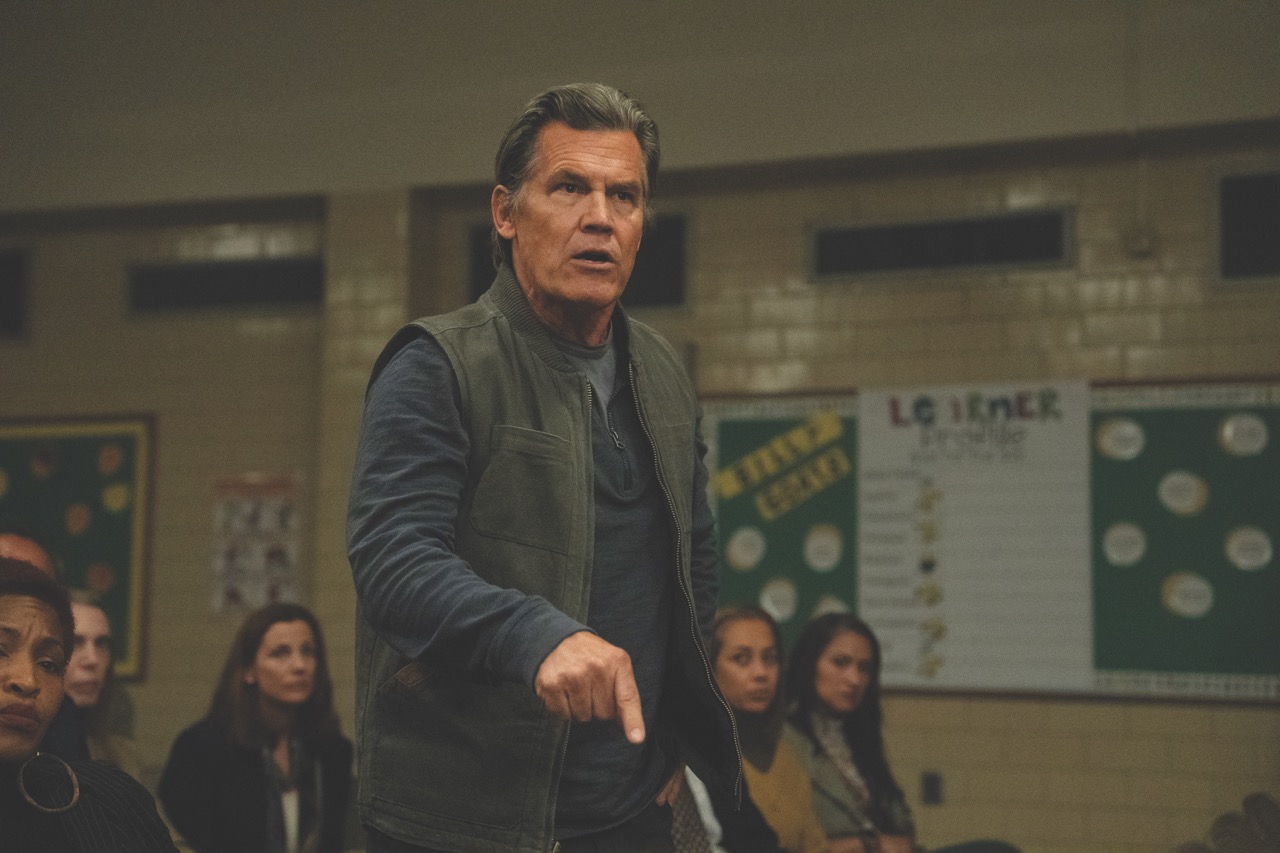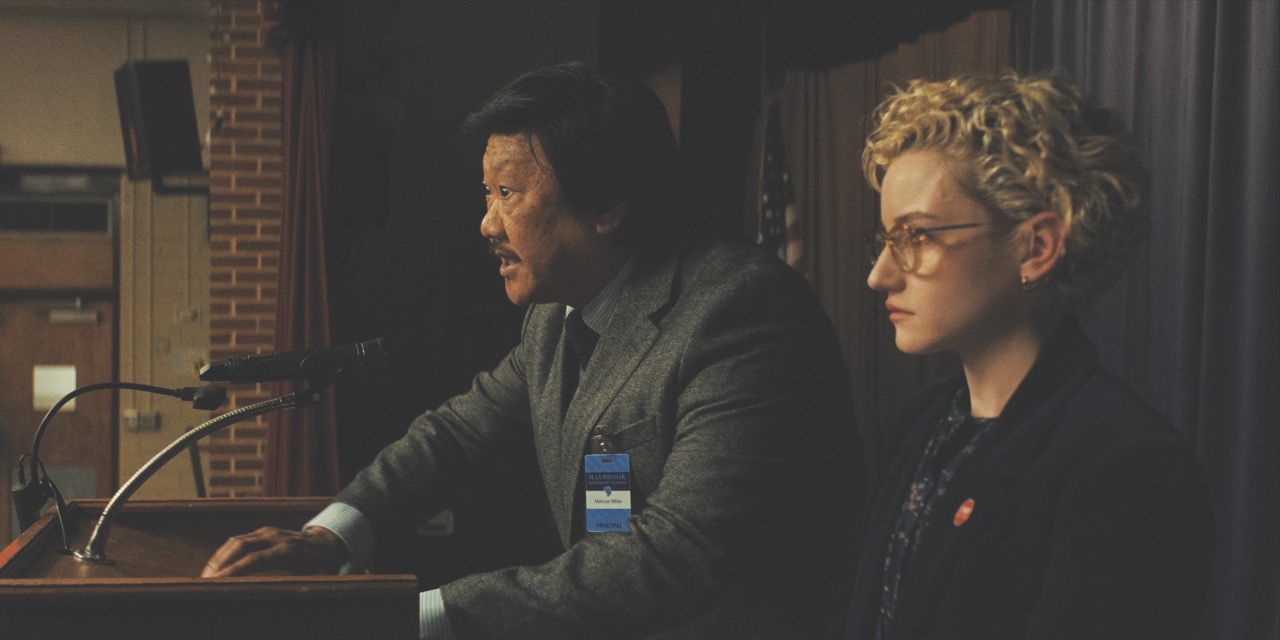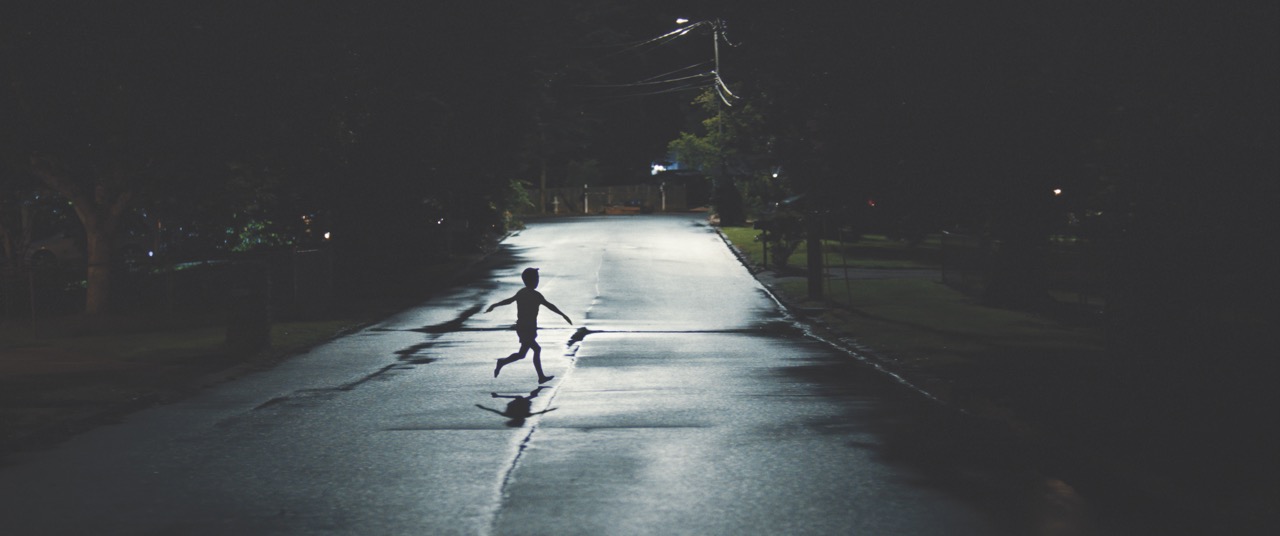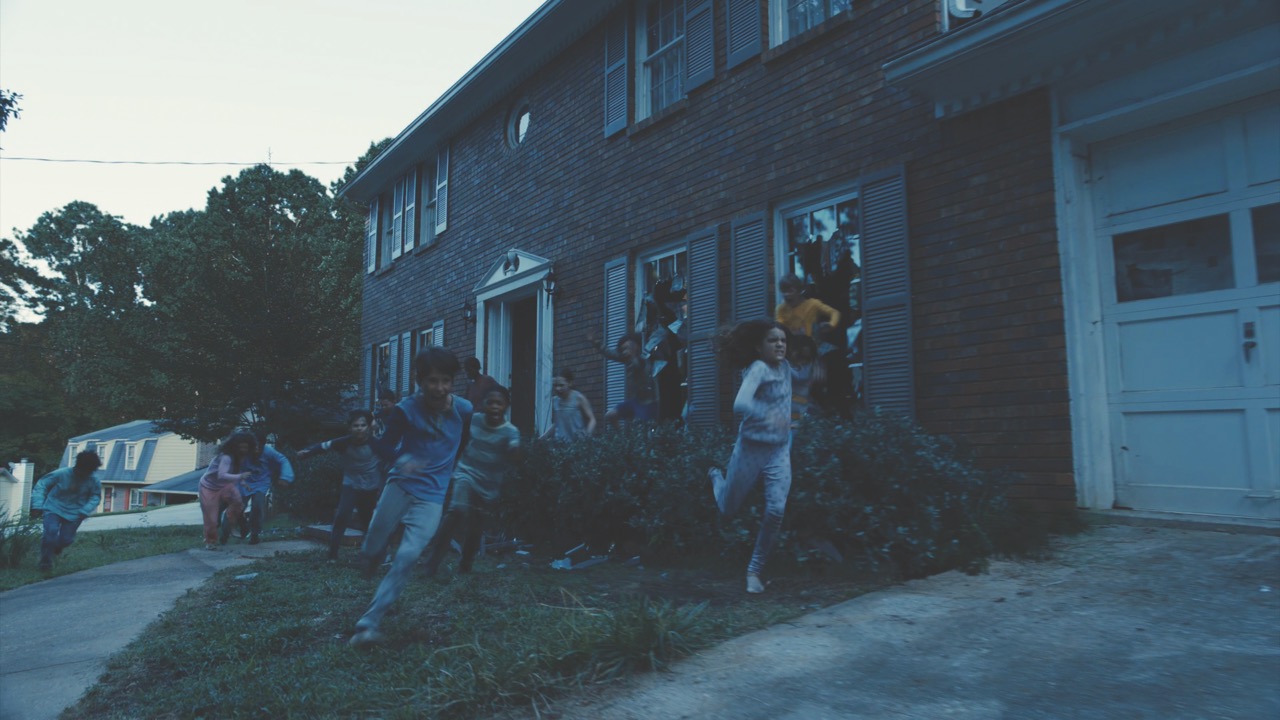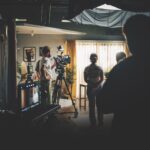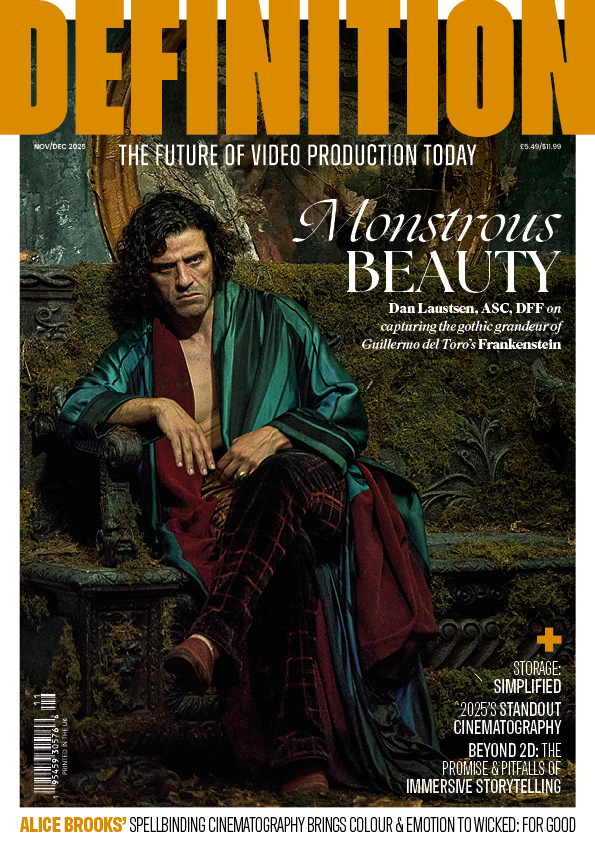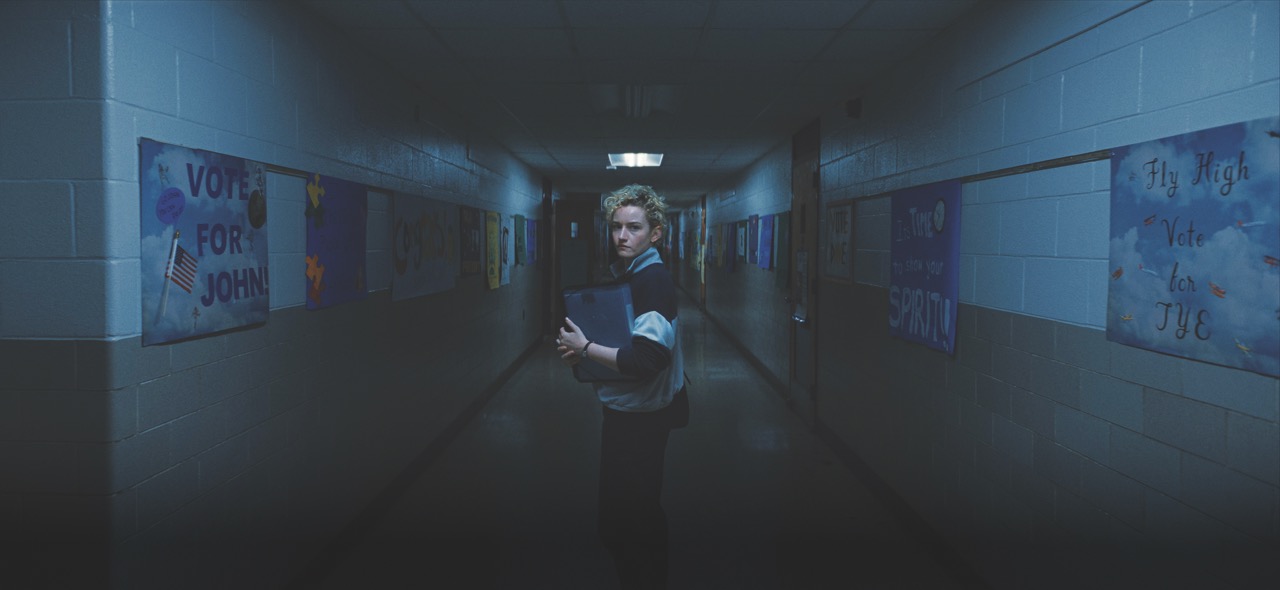
Production: Weapons
Posted on Oct 14, 2025 by Admin
We catch up with the creative team behind Weapons, unpacking the horror-comedy’s wildest looks and most frightening sound effects – all of which serve the story. Beware: major spoilers ahead!
Words Katie Kasperson | Images Warner Bros
Weapons begins with a short story, as told via child narrator: at 2.17am, 17 kids get out of bed, open their front doors and vanish into the darkness. At school the next day, Justine Gandy finds her third grade classroom empty, apart from one student: Alex.
Written and directed by Zach Cregger (Barbarian) and lensed by DOP Larkin Seiple, Weapons is a horror story on its surface; but it’s also a comedy of sorts, full of social commentary and autobiographical elements. The film is undoubtedly gruesome, but it ‘doesn’t do gore for gore’s sake’, claims makeup department head Leo Satkovich.
Rather, the most graphic moments further the story, he argues, and every last detail has been scrutinised. From the school’s principal, Marcus, murdering his husband to Alex’s campy, off-beat Aunt Gladys kicking off the film’s third act, the entire creative team had their work cut out when perfecting the fine details.
A haunted house
With the 17 missing children, Weapons – which evolves over a nonlinear narrative – begins as more of a mystery than anything else. What happened to them, and why did they all leave at exactly the same time? The parents blame Justine, targeting her as the common denominator, while she herself also seeks the truth as to what happened that night, and why. So she turns to the single remaining child, Alex, for answers.
Justine follows Alex home from school, snooping around his yard for clues. Mixed in Dolby Atmos, the sound department – which includes supervising sound editor Luciano Vignola and sound effects editor Filipe Messeder – wanted to make the world of Weapons ‘totally immersive’, says Messeder. “When Justine is in the front yard, and then goes round the back, the sound of the cicadas changes,” he explains. “The camera pans around her, and the cicada sounds move. Then, as the camera stops, they die down again. These little moments aim to confuse the audience and make them feel uneasy – just as much as Justine is.”
Once in the backyard, Justine peers through a gap in the newspaper-covered windows, seeing Alex’s parents inside. They’re not like normal parents though – they’ve got wild hair, fork marks in their faces and expressionless eyes. Later on, the audiences learns how they got that way; they were possessed by Alex’s Aunt Gladys.
“When you read the script, you’re thinking, ‘Oh my gosh, this is going to be murder town’,” begins Satkovich, “and it actually wasn’t.” There’s a moment when “Alex’s parents are stabbing their faces with their forks,” he describes, “but you don’t see any blood flying around.” But almost every other time they’re on screen, the stab marks are still visible. To create this effect, Satkovich marked up the actors’ faces in a design program and sent a copy to Jason Collins, the film’s special makeup effects designer.
Rather than having to apply individual stab marks, Collins created full-cheek prosthetics for Alex’s parents, with some smaller pieces. “We wanted to be able to slap them on,” says Collins, mainly to save time in the makeup chair. Satkovich and Collins also wanted to see the depth of the wounds on screen, cementing prosthetics as the obvious choice.
The sound team – primarily the foley artists – sonically enhanced the stabbing scene, but it’s not overdone. “When creating our mix, we found that upping the gore factor took us out of the picture,” Messeder reveals. “The more realistic we were with those sounds, the more horrific they became.”
Lock your doors!
After seeing Alex’s parents, Justine returns to her car and falls asleep. We then watch the front door open and the mother walk out, scissors in hand. “She’s completely backlit. If it weren’t for her hair – and crazy walk – it wouldn’t have had the same effect,” argues Satkovich.
There’s an underlying emphasis on hair throughout Weapons, with Aunt Gladys using it to control others – and sporting a very unique hairstyle herself. Hair department head Melizah Wheat had a field day, taking a ‘bolder is better’ approach to signify that certain characters had become unhinged – Alex’s mother included.
She pauses for a moment outside Justine’s window, “and then walks out of frame,” says Vignola. “Then, you hear the car door open off-screen,” he continues, followed by Alex’s mother getting inside, reaching towards Justine and cutting her hair. “We had recorded the sound of this low, creepy, ominous breathing. We thought – sort of instinctively – to cut that in when this character enters the car.
“It wasn’t until the last few days of the mix that we had a realisation of, ‘What if we don’t hear the breathing until after the scissors snip the strands of hair?’” continues Vignola. “We realised that the breathing gives away the proximity of the character to the camera. It was a very subtle thing, but an effective way to eke out more fear.”
Principal Marcus goes rogue
Around the film’s mid-way point, the truth starts to unravel. “Once Aunt Gladys shows up, you’re in a different film,” states Collins, and the pieces slowly get put together. Although, chronologically, she’s already possessed Alex’s parents and classmates, principal Marcus is the first character to be weaponised on-screen, attacking his husband Terry and then Justine. In perhaps the most unsettling scene, Marcus uses his own face to bludgeon Terry’s head. Most of the murder occurs on-screen, cutting away for only a few seconds before revealing the aftermath. Achieving authenticity proved a challenge for the whole team; “I’m inclined to say that none of the filmmakers who worked on this film have ever personally experienced a moment like that,” says Vignola.
When first possessed by Gladys, Marcus’ eyes become crazed – a visual effect handled by Ingenuity Studios. The VFX team, supervised by Gabriel Regentin, created what they call a ‘raccoon mask’, using motion capture to build a digital representation of the area around Marcus’ eyes. They could then adjust the eye-bulging intensity in post, depending on what each frame warranted.
Marcus kills Terry quickly, leaving his head smashed open on the kitchen floor. For this sequence, “we made three separate heads,” explains Collins. “The first was an exact replica of the actor’s – and they’re all attached to a body that matched his size. Everything was soft,” he adds, so as not to hurt Benedict Wong, who plays Marcus. “The second head is starting to get caved in,” continues Collins, who attached each head to the body using Velcro. “While the camera is locked on Marcus, I can rip off that head and put in the last one, which is completely bashed in.”
For the final touch, Vignola added re-recorded ‘dialogue’ – which was really just Terry groaning – in order to heighten the ‘human element’ of such a brutal sequence. “It’s a fine line between what is fetishised versus something that could be passed off as realistic,” he suggests. “It’s rooted in diegetic reality, but we added a little extra salt.”
Introducing: Aunt Gladys
While we’re well into the story before Aunt Gladys gets introduced, she’s the film’s true antagonist – and arguably its star. Played by Amy Madigan, who ‘is such an emotional actor’, says Satkovich, Gladys was conceived, ironically, with subtlety in mind. While her hero look combines bold makeup with sixties-era fashion sense, her facial structure was largely left as is. “We wanted Gladys to feel rooted in reality and not like she was some kind of supernatural villain,” Satkovich shares.
To establish Gladys’ appearance, Collins looked to her personality. “She has a ferocity to her,” he says. “She’s always watching, always leering. We see her look insane in one scene, then in the next she’s all business. You have to be able to buy that.” Collins made small adjustments to Madigan’s face, including ‘one pupil smaller than the other’, a ‘sharp nose’, elongated earlobes and gummy teeth.
Key to Gladys is her red wig. “I tried to keep it authentic; it’s clear that this woman doesn’t spend time styling her wig,” says Wheat. “She pops it on, and you get what you get. We didn’t want it to be symmetrical. Things aren’t quite right with her, and it’s all of those little things – taking a gentle approach – that have a big effect.”
The missing children are (spoiler!) being held captive in Alex’s house, and the audience later learns that it was Gladys who possessed them. Alex, who knew this all along, is ultimately the one who breaks her spell, setting the kids on a witch hunt to kill their captor.
The children chase Gladys around the neighbourhood, jumping through windows and busting down doors – ignoring anything that stands in their path. “There’s a short sequence where a single child runs through the kitchen and into the living room, then bursts out of the window and into the lawn,” describes Vignola. “We needed a way to enhance that. We wanted to feel the weight of this child running through the space.
“We built this rattler table with a piece of plywood,” he continues, “and underneath, we fixed a subwoofer to it. Because it’s a speaker, you can feed it whatever sound you want. The idea there is that things will rattle in perfect sync.”
All’s well that ends well
When the kids eventually catch Gladys, they rip her to shreds – another scene that required a hefty dose of stunts and special effects. As she’s torn apart, an ‘angelic’ score, as described by Vignola, begins to swell, bringing the film’s climax – and the terror – to an end.
“It’s a true kismet moment that you don’t get on many productions,” insists Satkovich – not of the film’s ending, but of how it all came together, both creatively and technically. Apparent from start to finish, the crew’s attention to detail made Weapons a horror that, witchcraft aside, feels firmly rooted in the real world.
This story appears in the September/October 2025 issue of Definition


